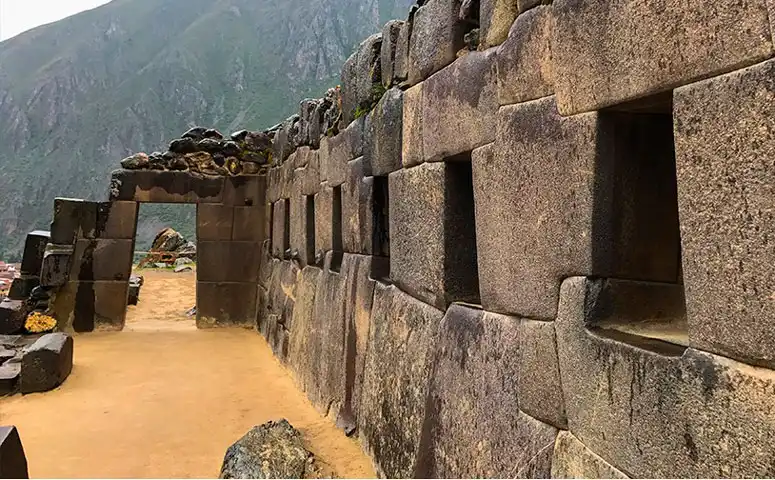
In the Sacred Valley of the Incas, in the province of Urubamba, on the banks of the Patacancha River, 60 kilometres northwest of Cusco and at an altitude of 2,792 m a.s.l., lies your next destination: Ollantaytambo, the stone town, the archaeological park, and the starting and finishing point for those travelling to and from llacta the Machu Picchu site.
Known as the “Living Inca City,” that’s how it’s referred to, how it’s known, and how you will feel as you wander its cobbled streets, gaze at its houses built in pre-Hispanic times, and explore the fortress, temples, terraces, and other monumental sites that reveal the fascinating urban vision of the “Children of the Sun.”
All these sights are set against a stunning geographical backdrop. With snow-capped mountains enhancing the horizon and fluffy clouds floating in the clear sky, these details, combined with traditions, folklore, and vibrant culture, make Ollantaytambo an extraordinary place.
Don’t hesitate. Make up your mind. Head towards the “Living Inca City” and take your time to explore it on your journey to Peru. Don’t rush through it. Don’t visit just to tick it off your itinerary. Walk it, interpret it, and enjoy it. You’ll see that it’s worth it!
Contents [show]
Fortress with a story
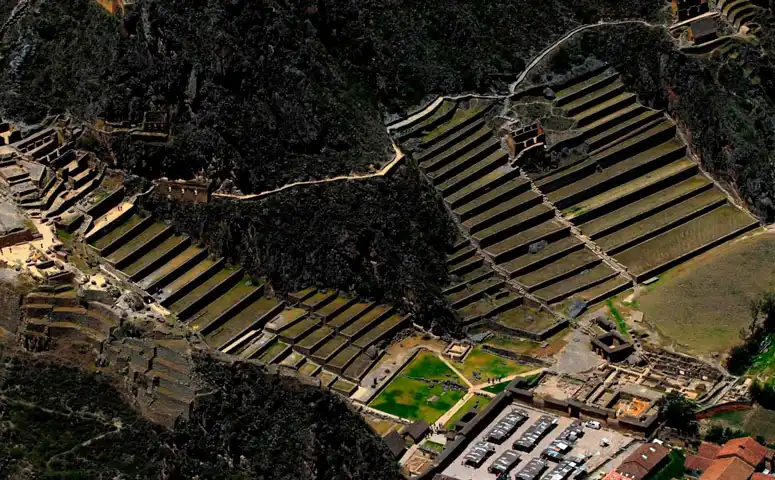
15th Century. Inca dominance solidifies in the Andes. Pachacútec rules and expands his territories. In this process, the Cusqueñan forces take over lands once occupied by the Wari, regarded as the first imperial structure of ancient Peru.
In this place, known today as Ollantaytambo, Pachacútec would build a fortress to prevent the advance of any potential invaders and to control the entrance and exit to the Sacred Valley of the Incas. He also turned it into a stopping point on the Qhapaq Ñan, the great footpath that connected the Tawatinsuyu.
Ollantaytambo is a transition zone between the Andes and the Amazon and has always been a strategic point. Pachacútec understood this, which is why he established a tambo (a resting place and supply station for travellers). Today, tourists arriving in the town know this well as they board the train to Machu Picchu.
Others head to Piscacucho, at kilometre 82 of the railway, to take the first step on the spectacular Inca Trail that leads to one of the modern wonders of the world. But don’t rush ahead; that’s another story, another tale. Today, you are in the town and archaeological park of Ollantaytambo.
The perspective of a chronicler
A fortress and resting place for the nobility, wrote the chronicler Pedro Sarmiento de Gamboa. The author of Historia de los Incas, this navigator, scientist, and cosmographer arrived in Peru in 1557 and quickly became a prominent figure in colonial society.
It wasn’t just the grandeur of the stone blocks that impressed him. Sarmiento de Gamboa was intrigued by the terraces and the structures erected in Ollantaytambo for the worship of ancient gods. In his view, these reflected the agricultural inclination of their builders and the importance of religion in the Inca state.
But it wasn’t all agriculture and ritual. The territorial expansion through diplomacy or military conquest was another hallmark of the “Children of the Sun.” This strategy allowed them to solidify their empire and propagate their culture and worldview across much of present-day South America.
Unlike other civilizations, the Incas did not destroy the infrastructure of the towns they conquered or annexed. Their strategy was to intervene and improve what already existed. This is what likely happened in Ollantaytambo, where the initial structures were of Wari origin.
The heavy blocks of carved stone were modified by Cusqueñan architects. Their knowledge of urban planning and hydraulics endowed the archaeological park with the magnificence that will captivate you at the Temple and House of the Sun, the monumental entrance, the Ñusta’s baths, and the Temple of the Ten Niches.
A name with history
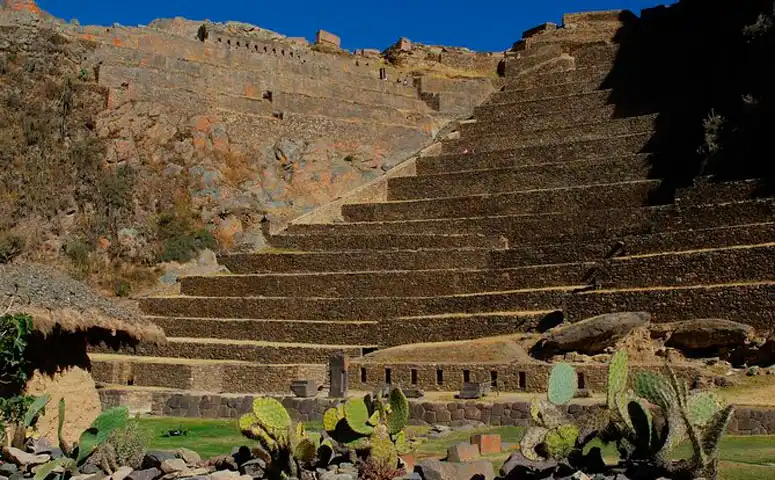
What does Ollantaytambo mean? Is it just one word, or is it a fusion of two terms? If this question is on your mind, don’t worry. Here’s the answer.
The etymology of Ollantaytambo comes from the Aymara word ollantay and the Quechua word tampu (tambo). Before explaining its meaning, it’s important to mention that, according to the Political Constitution of Peru, both native languages are official in areas where they are predominantly spoken or have a significant number of speakers.
Now, back to the explanation:
- Ollantay: This is thought to derive from the Aymara «ulla-nta-wi», which means “place of observation from below.”
- Tambo: This means a resting place. During the Inca period, tampus were strategic points along trade and transport routes where travellers could rest, replenish supplies, and spend the night.
Another version suggests that the name is related to General Ollanta, the protagonist of an Andean drama published in Cusco Quechua during colonial times. Various researchers believe that the story of this warrior who fell in love with Pachacutec’s daughter may actually be a pre-Hispanic work.
To this day, the origin of its name remains uncertain. The same goes for the true meaning of Ollantaytambo. Could it be the “resting place of Ollanta” or “the tambo that is observed from below”?
Ollantaytambo in the Colonial Period
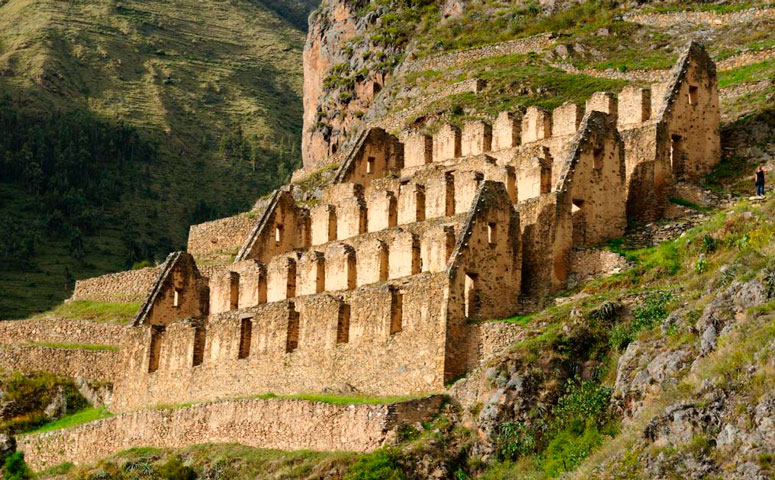
A Journey Through History. The arrival of the Spanish in ancient Peru coincided with Atahualpa’s victory in the fratricidal war against Huáscar, which erupted after the death of their father, the Sapa Inca Huayna Capac.
After Huáscar’s defeat and Atahualpa’s capture in Cajamarca by Francisco Pizarro’s forces, another son of the deceased ruler welcomed the Iberians with open arms and even a degree of sympathy.
The reason: Manco Inca had supported Huáscar, and as the saying goes, “the enemy of my enemy is my friend,” the young Cusqueño gladly accepted the title of Sapa Inca granted to him by the invaders of the Tawantinsuyu.
Gradually, he realized he was merely a decorative figure while his bearded “friends” committed excesses and abuses against his people. This was intolerable. He was a “Child of the Sun” and could not allow such atrocities. He had to take action… and he did! He rebelled against the conquerors in May 1536.
The Inca and his forces settled in Ollantaytambo. In January 1537, an expedition led by Hernando Pizarro, Francisco’s brother, set out from the “Imperial City” with the mission to quell the uprising. The contingent consisted of 100 Spaniards and about 30,000 allied Indigenous warriors.
The confrontation was inevitable. The Battle of Ollantaytambo was fierce. The Spanish would be defeated by the rebel army, which numbered 20,000 soldiers. It was an important victory, but not a definitive one. Soon after, Manco Inca would take refuge in Vilcabamba, where he was assassinated in 1541.
How to Get to Ollantaytambo
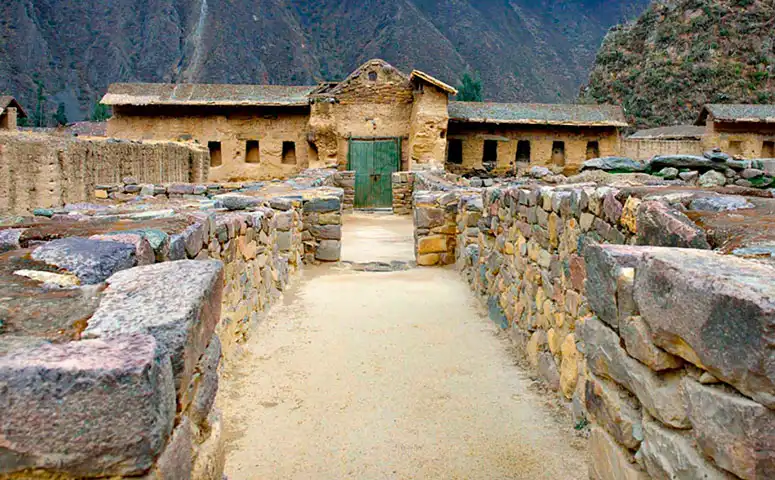
From Cusco, there are four ways to reach Ollantaytambo, located 60 kilometres northeast of the Inca capital.
If you want to avoid crowds at the archaeological park, start your journey early. The visiting hours are from Monday to Sunday, 7:00 a.m. to 5:30 p.m.
Before boarding the bus or shared taxi to the “Living Inca City,” make sure you have your Cusco Tourist Ticket (BTC). Ollantaytambo is included in both the Integral Ticket (S/ 130 for foreigners, S/ 70 for Peruvians) and the Partial Ticket III (S/ 70 for foreigners, S/ 40 for Peruvians). If you already have it, don’t leave it at the hotel. Otherwise, you can purchase it at the archaeological site.
Now, get ready to head to Ollantaytambo!
- By Bus: In Cusco, head to Pavitos or Puputi streets, where buses to Ollantaytambo depart. The journey takes about 1 hour and 30 minutes, and the approximate fare is S/ 15 per person.
- By Shared Taxi: Vehicles offering this service depart from various points in the city and provide an economical option to reach Ollantaytambo. Travel time and prices vary depending on the starting point and service conditions.
- By Taxi: You can hire a vehicle in Cusco to take you to Ollantaytambo. While this will cost more than public transport, it offers greater comfort and flexibility. If you choose this option, agree on the price before getting in and clarify whether it will be a round trip. For added security, ask your accommodation for a trusted driver.
- By Tour: Local operators offer a variety of alternatives for visiting Ollantaytambo. Being part of an organized tour will allow you to enjoy a relaxed and safe experience while supporting Cusco’s entrepreneurs.
Travel Tips
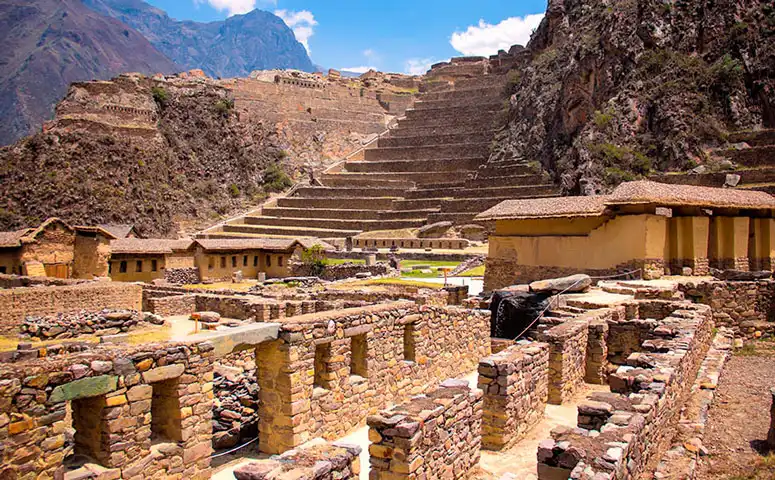
- Plan your visit and check the transport options, opening hours, and any other details of interest.
- Ollantaytambo is situated in a mountainous region, so the weather can be variable. Make sure to wear comfortable and warm clothing.
- Protect yourself from sun exposure. Always have sunscreen on hand. Wear sunglasses, sunblock, and a hat. UV-protective clothing is also recommended.
- Water is life. Always carry a water bottle with you. Remember that staying hydrated is key during high-altitude excursions.
- Be diligent in caring for the archaeological heritage. Respect the rules set by the authorities for its protection.
- Take the opportunity to sample the typical dishes of Ollantaytambo, such as roasted guinea pig, pork cracklings, or quinoa soup.
- Wear comfortable and suitable footwear for walking.






